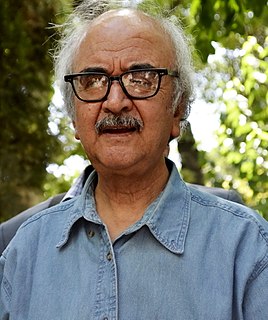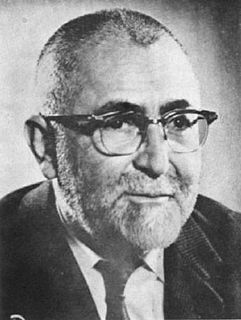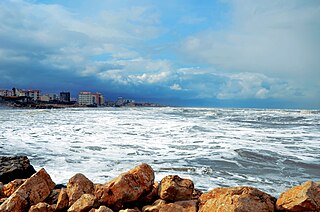Parvēz, Pērvaz or Parvīz, is a Persian male given name, mostly popular in Iran, Central Asia, South Asia and among Azeris. It is also a common surname.

Peter William Avery OBE was an eminent British scholar of Persian and a Fellow of King's College, Cambridge.

Mohammad Reza Shafiei Kadkani is a Persian writer, poet, literary critic, editor, and translator.

Badi'ozzamān Foruzānfar was a scholar of Persian literature, Iranian linguistics and culture, and an expert on Rumi and his works. He was a distinguished professor of literature at Tehran University.

Nur with other writing Nour or Noor, is a city and capital of Nur County, located on the Caspian Sea in Mazandaran Province of northern Iran.

Iraj Afshar was a bibliographer, historian, and an iconic figure in the field of Persian studies. He was a consulting editor of Encyclopædia Iranica at Columbia University and a full professor emeritus of University of Tehran.

The First Perso-Turkic War was fought during 588–589 between the Sasanian Empire and Hephthalite principalities and its lord the Göktürks. The conflict started with the invasion of the Sasanian Empire by the Turks and ended with a decisive Sasanian victory and the reconquest of lost lands.
The Daylami language, also known as Daylamite, Deilami, Dailamite, or Deylami, is an extinct language that was one of the northwestern branch of the Iranian languages. It was spoken in northern Iran, specifically in the mountainous area in Gīlān, Mazandaran, and Ghazvin Provinces.
Nora Picciotto, formerly Baroness Nora Bentinck and Nora Czartoryski is the first wife of Prince Adam Karol Czartoryski, mother of Princess Tamara Czartoryska.
Iran Shenasi also spelled as "Iranshinasi" is an academic journal of Iranian studies. The founding editor-in-chief is Jalal Matini. The journal is published in Persian and covers Iranian history, Persian culture, and Persian literature. The majority of research libraries in the world that have a Middle Eastern or Iranian studies program are subscribers and it is considered as one of the most authoritative journals on the culture of Iran and Persian literature.

Paran Parviz is a village in Malavi Rural District, in the Central District of Pol-e Dokhtar County, Lorestan Province, Iran. At the 2006 census, its population was 996, in 213 families.

Chaga Parviz is a village in Rud Zard Rural District, in the Central District of Bagh-e Malek County, Khuzestan Province, Iran. At the 2006 census, its population was 29, in 4 families.

Gur Parviz is a village in Donbaleh Rud-e Jonubi Rural District, Dehdez District, Izeh County, Khuzestan Province, Iran. At the 2006 census, its population was 339, in 59 families.

Dehnow-e Parviz is a village in Derakhtengan Rural District, in the Central District of Kerman County, Kerman Province, Iran. At the 2006 census, its existence was noted, but its population was not reported.

Parviz Khani is a village in Siyarastaq Yeylaq Rural District, Rahimabad District, Rudsar County, Gilan Province, Iran. At the 2006 census, its population was 9, in 4 families.

Deh-e Parviz Sarani is a village in Qorqori Rural District, Qorqori District, Hirmand County, Sistan and Baluchestan Province, Iran. At the 2006 census, its population was 26, in 7 families.
SAMAK-E ʿAYYĀRis an old Iranian folklore story transmitted orally and written down probably around 12 century.
The story belongs to the Persian literary genre of popular romance. It narrates the adventures of the prince Khorshid-shāh who is born after a long time prayers of his old father, Marzbān-shāh. At the age of sixteen, Khorshid-shāh, the prince, falls in love with Mah-pari, the princess of Chin(China), and that is the starting point of his journey to join his beloved. Meanwhile, he receives help from a group of “Knight errant” or ʿayyārān who are followers of javānmardī'orFotowwa principles. Samak, the main protagonist of the story is an ʿayyār who becomes the best friend of the young prince and helps him to fulfill his adventures. The story ends unfinished as the only extant version of this romance which is an illustrated manuscript preserved in three volumes in the Bodleian library in Oxford is not completed. Moreover,the manuscript has no colophon; therefore, we have no information about patron and scribe of the book; also there is not any reliable note indicating the exact date and place of the codex's creation. The romance was originally told by a professional storyteller. According to the story's text, Farāmaz ibn Khodādād ibn Kātib Arrajānī, is the compiler and the story's second narrator who heard it from a certain Ṣadaqa b. Abi’l-Qāsem Shīrāzī, the first narrator of the story. The story contains lots of old, ancient Iranian names like, Khordasb Shido, Hormozkil, Shāhak, Gilsavār, Mehrooye, Zarand. The existence of lots of Turkish names implies that it is not written down before Seljuq period, meanwhile, the layout, the style of illustrations and the existence of some famous verses indicate that it is created during the first half of fourteenth century. The text was edited and published for the first time by Parviz Nātel Khānlari during 1347/1968 and 1353/1974. It is published in five volumes by Sokhan, and later by Āgāh publishing center in Iran. The book of Samak-e ʿayyār is a brilliant source of cultural and social information of medieval Iran and followed the structure of stories which belong to the oral tradition.
The manuscript has 80 illustrations; the images are particularly interesting as their artists – in contrast to the illustrators of other texts like the Shāhnāme – had no previous example to imitate for the scenes. It was in 1936, that Ivan Shchukin categorized the images of the manuscript as belonging to the Inju style, an idea which is still generally accepted.
Shahriyarnameh is an epic poem in Persian which relates the stories of Shahriyar son of Borzu son of Sohrab son of Rostam. The stories take place in Hend, Send and Sarandip. According to Zabihollah Safa, the author of this epic is Othman Mokhtari, but Abbas Eqbal Ashtiani, Parviz Natel-Khanlari and Jalaluddin Homai reject this theory. The story has survived in three incomplete manuscripts which differs considerably, but all of them relate the same story. The first manuscripts seems to be from 18th century and contains 180 papers. In this manuscript, the author mentions his name as "Farrokhi". The second manuscript is kept in Tajikistan and contains the most comprehensive version of the poem. The third manuscript contains 32 papers and is kept in Britain.
St. Louis School, Tehran was a French Catholic school established by the Lazarists in 1862 in Tehran, Iran.








